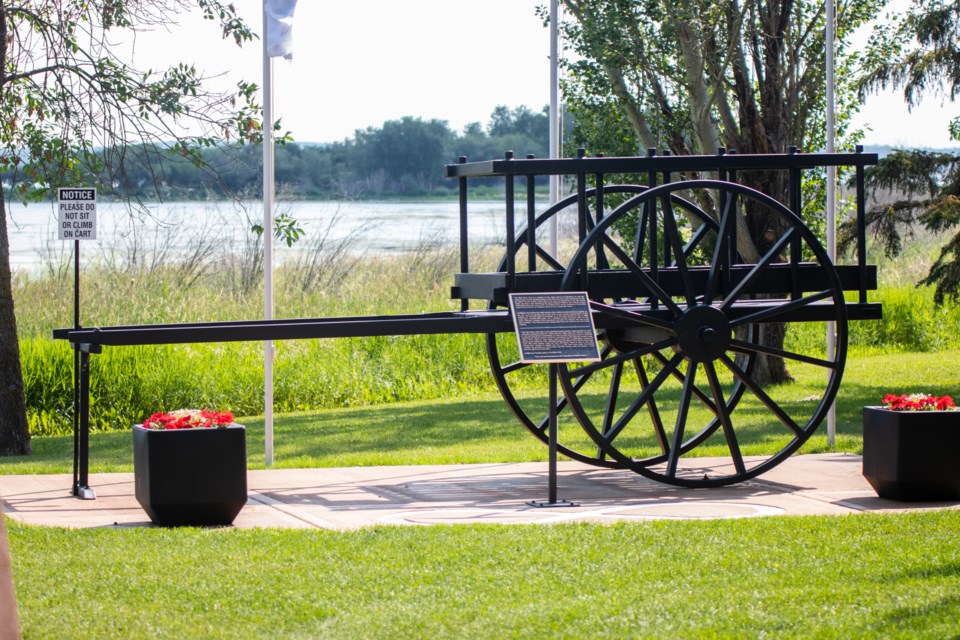ST. PAUL – Members of the community and dignitaries gathered on June 24 at Lagasse Park to witness the unveiling of the new Red River Cart monument, celebrating the history between the Town of St. Paul and the Métis community.
The monument is part of the St. Paul & District Chamber of Commerce’s Commemorative Project, with the aim of commemorating, celebrating, and connecting the residents of St. Paul “after several trying years,” said Yvonne Weinmeier, executive director with the Chamber of Commerce.
“The impacts of COVID-19 have impacted our communities significantly,” and the goal of the commemorative project is the revival of local economies through social interactions, and celebratory engagement, she said.
As for the cart itself, it recognizes and celebrates, “the history of St. Paul, formerly St. Paul des Métis, but also recognizes all those who at one time passed through or made this area home,” said Weinmeier.
Located along Therien Lake, traditionally known in Cree as Mannawanis lake, Lagasse Park’s location was historically a meeting and gathering place for the collection of duck eggs by Indigenous people.
“Currently, Lagasse Park is the place where families meet to spend time together to enjoy the space and have fun.” It is also a place they can also get to know the various cultures of St. Paul through the many art installations at the park, she added.
Speaking to attendees, Andrea Sandmaier, vice-president for Region 2 of the Métis Nation of Alberta (MNA), spoke of the historical significance of the Red River Cart. In the late 1800s, many Métis families moved to the area, and red river carts were a primary method of transportation.
In addition, the carts were also used to haul furs for hundreds of miles, and were used during resistance efforts for transport, protection, and shelter. “Today, the Red River Cart is the most recognizable symbol of Métis culture and nationhood,” said Sandmaier.
She thanked all those involved in the creation of the cart monument, including the Smoky Lake Chamber of Commerce, Alberta’s Iron Horse Trail, Champions for Change, Lakeland Tourism and Historical Society, and Community Futures.
Town of St. Paul Mayor Maureen Miller also thanked all those involved, noting how swift the grant funding was signed off by all partners involved with the project. The monument was funded through a federal grant, Celebration and Commemoration Reopening Fund from Heritage Canada.
“So, it was truly an effort of many and I’m very proud to be standing here on behalf of the community today to see it actually come to fruition,” she said.
The monument is a representation of “two vital elements,” she added, which is the river and the cart. The river symbolizes the life force that sustains people – a source of nourishment, cleansing, and connection. On the other hand, the cart represents movement, progress, and the shared responsibility “we have to carry, the weight of our shared history, and work towards a better future.”
Miller said the unveiling of the monument is a step forward toward reconciliation, and a testament of the community’s collective effort to acknowledge and rectify the injustices of the past, “and to build a future based on mutual respect, understanding, and inclusivity.”
Notable dignitaries during the unveiling also included MLA Scott Cyr representing the Government of Alberta, County of St. Paul deputy reeve Maxine Fodness, and MNA Region 1 President James Cardinal.
In addition to the Red River Cart monument, another piece of the Commemorative Project includes the Honouring First Responders Plaque, which will be placed on the Fire Hall Tower later this summer.



